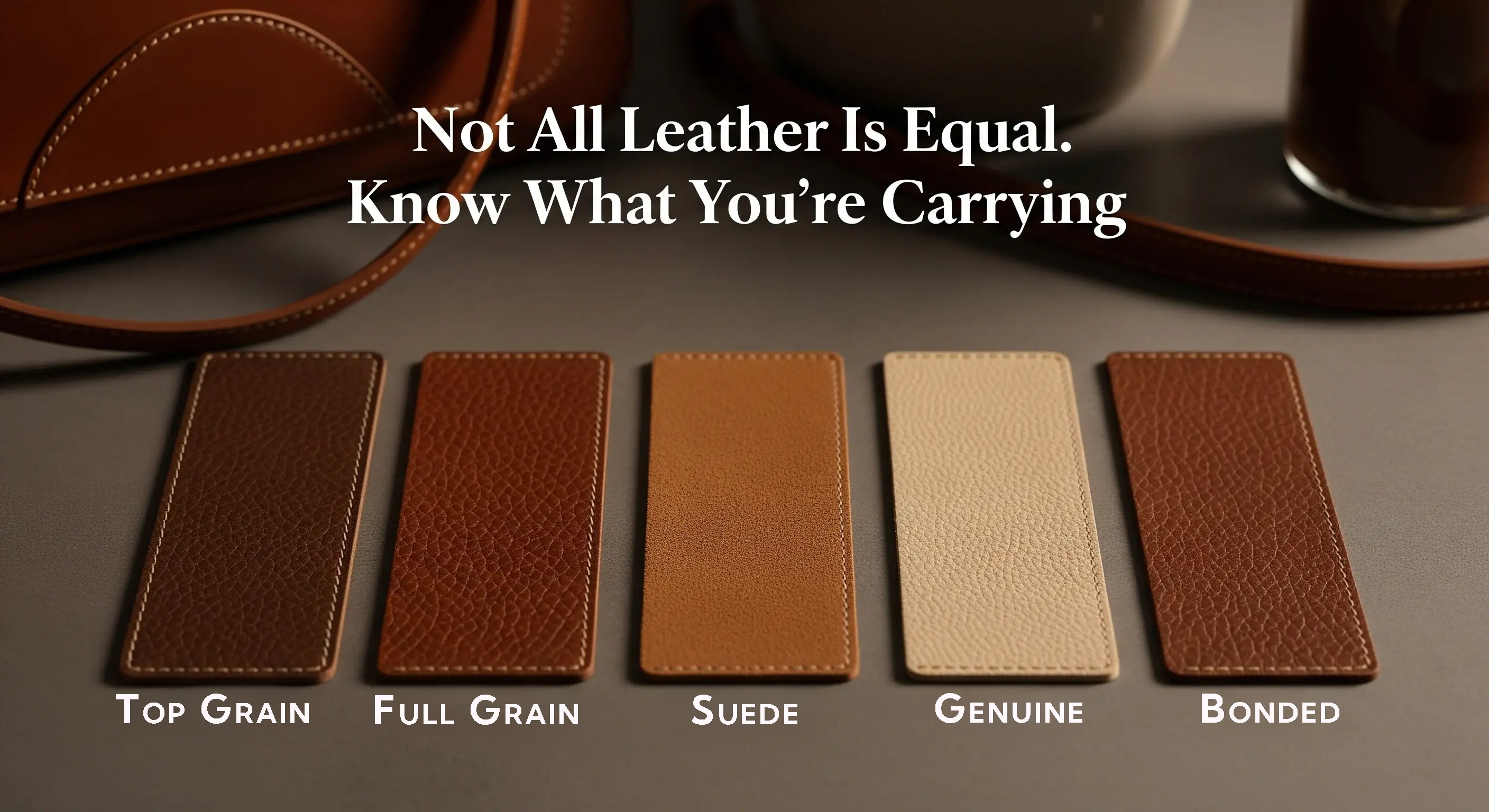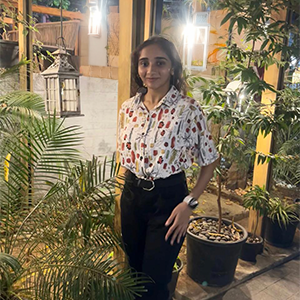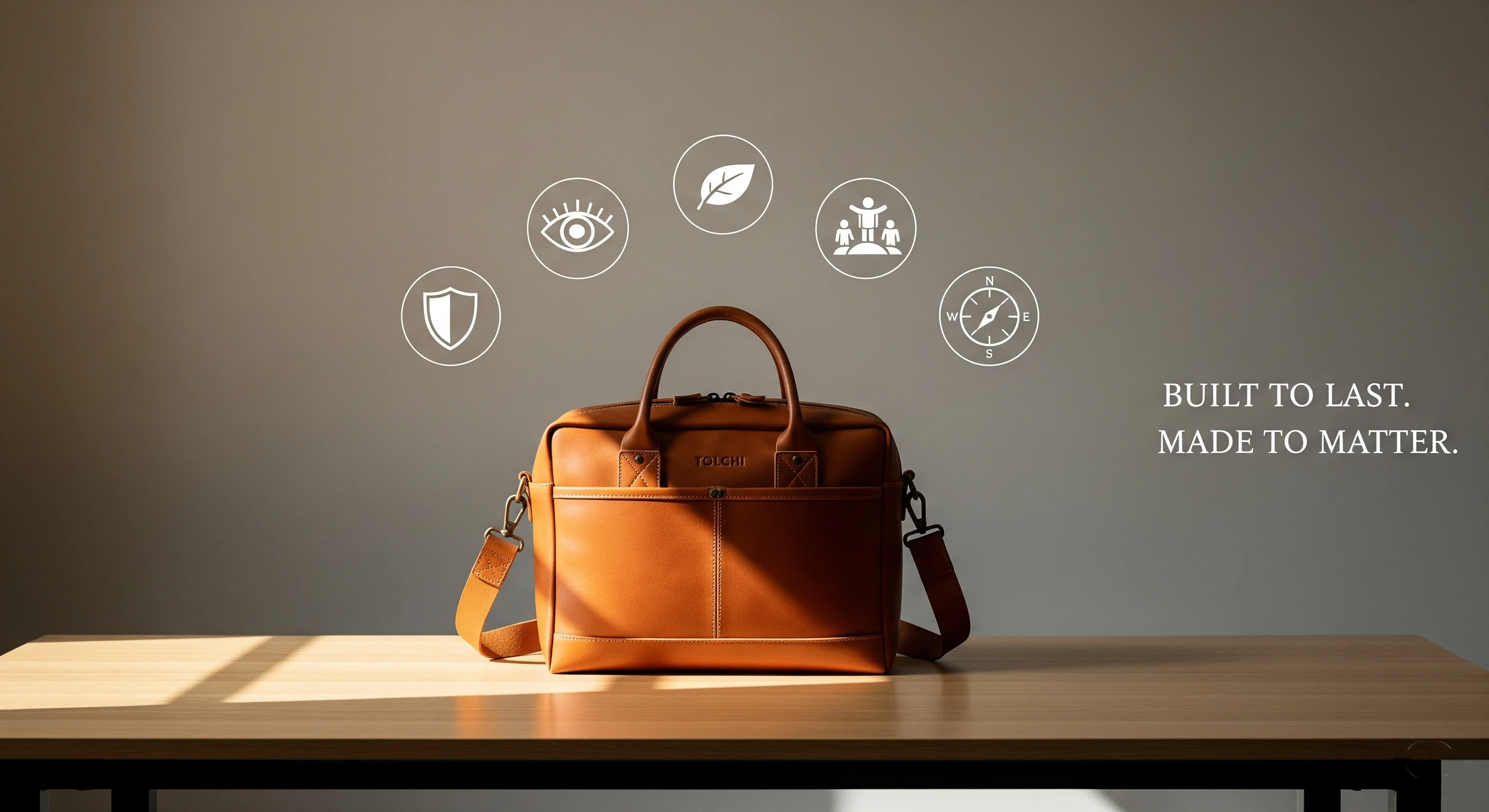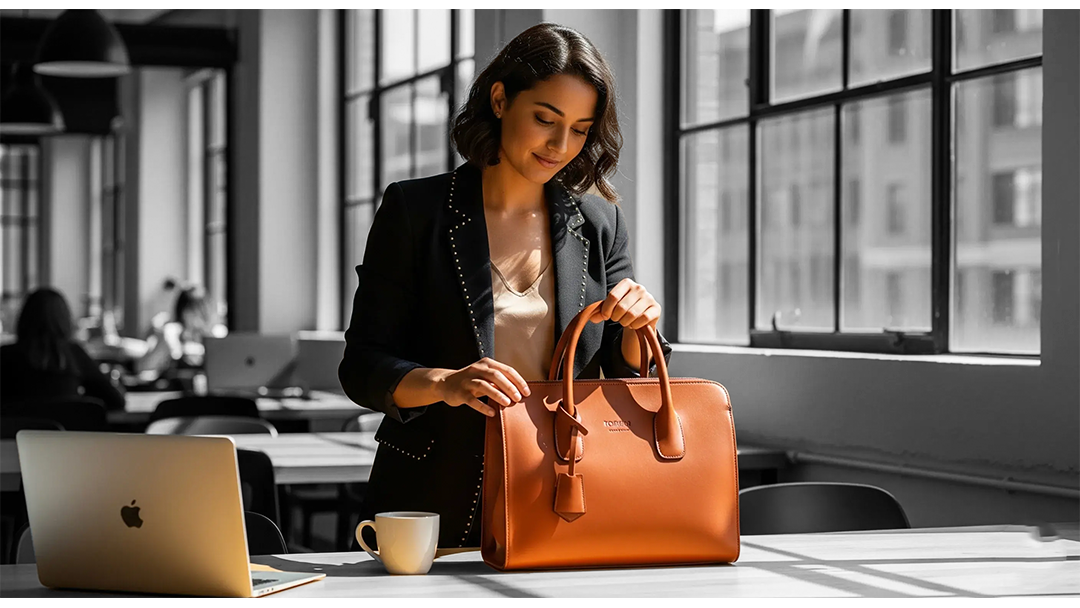Full-Grain, Top-Grain, Genuine? A Clear Guide to Leather Types and Their Uses

Why Understanding Leather Quality Matters
At Tolchi, leather isn’t just a material — it’s the foundation of everything we build. But for most people, terms like “genuine leather” or “top-grain” sound confusing, even misleading. And here’s the truth:
Not all leather is created equal — and knowing the difference helps you make smarter, longer-lasting choices.
Whether you’re investing in a laptop bag, backpack, or everyday tote, understanding the types of leather used in bags can help you avoid waste, save money over time, and choose quality that matches your lifestyle.
Here’s a straightforward breakdown of the most common leather types — what they are, how they’re made, and what they’re best used for.
1. Full-Grain Leather — The Highest Grade, Unmatched in Quality
This is the topmost layer of the hide — the part closest to the surface — and it includes all the natural grain, markings, and fiber structure. It’s considered the most premium type of leather for one reason: performance.
Key traits:
- Breathable, durable, and ages beautifully
- Develops a patina — a soft sheen — that grows richer over time
- Naturally resistant to wear and tear
Used in: Luxury leather bags, high-end belts, shoes, wallets, and long-lasting furniture
At Tolchi, our flagship bags are crafted from full-grain export-grade leather sourced from trusted manufacturers in India, designed to endure years of everyday use without breaking down.
If you want a leather work bag that grows with you and tells your story over time — choose full-grain.
2. Top-Grain Leather — Smooth, Sleek, and Highly Functional
Top-grain leather comes from the same upper portion of the hide but is slightly sanded or buffed to remove natural imperfections. This gives it a cleaner, more uniform appearance.
Key traits:
- Slightly thinner and more flexible than full-grain
- Easier to finish and dye
- Still strong and durable with proper care
Used in: Premium bags, wallets, apparel, and accessories where appearance is prioritized
It’s a perfect balance for those who want refined style and dependable structure in their everyday essentials.
3. Genuine Leather — A Misleading Label for Lower-Grade Material
Despite how it sounds, “genuine leather” does not mean “the best.” It actually refers to a lower layer of the hide, often processed, embossed, or coated to mimic higher-quality finishes.
Key traits:
- Made from leftover hide layers
- Often looks uniform but lacks strength
- Prone to peeling, cracking, and aging poorly
Used in: Budget bags, belts, jackets, and mass-market accessories
If you’re shopping for longevity or sustainable choices, steer clear of products labeled only as ‘genuine leather.’
4. Split Leather & Suede — Soft but Less Durable
When a hide is split, the lower layer becomes what’s called split leather. If it's processed with a buffed surface, you get suede — known for its soft texture and casual aesthetic.
Key traits:
- Soft, flexible, and fashionable
- Absorbs moisture easily
- Not ideal for heavy daily use
Used in: Fashion shoes, inner linings, jackets, soft accessories
While suede has its place in style, it doesn’t offer the same durability as full- or top-grain leather.
5. Bonded Leather — The Least Durable Option
Bonded leather is created by grinding up leather scraps, mixing them with adhesives and plastics, and pressing them into sheets. It’s essentially the MDF of the leather world.
Key traits:
- Very low leather content
- Coated to imitate real leather
- Peels and flakes quickly
Used in: Budget furniture, promotional accessories, fast-fashion goods
It’s inexpensive, but not made to last. At Tolchi, we stay far away from bonded leather — because you deserve better.
Choosing the Right Leather for You
If you’re someone who values longevity, craftsmanship, and timeless aesthetics, go for full-grain. It may cost more up front, but the cost-per-use makes it far more sustainable.
If you want a sleek look with reliable strength, top-grain is a solid choice.
If a product only says “genuine leather” or has no leather type mentioned — ask questions. In most cases, these are short-term solutions with limited wearability.
Smart buyers know this: Not all leather is built to carry your ambition.
What Tolchi Uses — And Why
At Tolchi, we mostly use full-grain and top-grain leather — sourced from export-grade tanneries with decades of experience.
No bonded leather.
No plastic “alternatives” that peel.
Just real materials, built with care.
We’re not here to sell fast fashion. We’re here to craft everyday leather bags that work as hard as you do.
Final Word: Choose Leather That Carries Your Story
Whether you're buying your first laptop bag or investing in a lifelong travel companion, the leather you choose makes all the difference.
And at Tolchi, we believe quality should never be a mystery.
📬 Want to be the first to know when we launch? Join the Tolchi community and get updates, early access, and founder notes like this straight to your inbox.
[Join Us →]
Share this post:



































































Comments